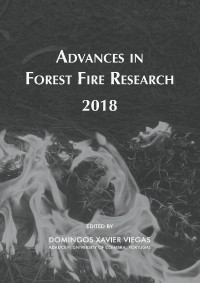Please use this identifier to cite or link to this item:
https://hdl.handle.net/10316.2/44632| DC Field | Value | Language |
|---|---|---|
| dc.contributor.author | Maianti, Pieralberto | |
| dc.contributor.author | Artés Vivancos, Tomàs | |
| dc.contributor.author | Guillaume, Bruno | |
| dc.contributor.author | Miranda, Ana Isabel | |
| dc.contributor.author | Monteiro, Alexandra | |
| dc.contributor.author | Gama, Carla | |
| dc.contributor.author | Houston Durrant, Tracy | |
| dc.contributor.author | Libertà, Giorgio | |
| dc.contributor.author | Boca, Roberto | |
| dc.contributor.author | Branco, Alfredo | |
| dc.contributor.author | de Rigo, Daniele | |
| dc.contributor.author | Ferrari, Davide | |
| dc.contributor.author | Lana, Fabio | |
| dc.contributor.author | Costa, Hugo | |
| dc.contributor.author | San-Miguel-Ayanz, Jesús | |
| dc.date.accessioned | 2018-11-10T18:52:05Z | |
| dc.date.accessioned | 2020-09-05T02:04:29Z | - |
| dc.date.available | 2018-11-10T18:52:05Z | |
| dc.date.available | 2020-09-05T02:04:29Z | - |
| dc.date.issued | 2018 | - |
| dc.identifier.isbn | 978-989-26-16-506 (PDF) | |
| dc.identifier.uri | https://hdl.handle.net/10316.2/44632 | - |
| dc.description.abstract | Since 2000, the European Forest Fire Information System (EFFIS) has provided continuous support and statistics on wildland fire events. The monitoring system covers all the European Countries, North Africa and the Mediterranean Countries of the Middle East, and provides information on the various aspects involved in the fire events, from fire danger forecasting to post-event analysis. One of the major impacts on the environment produced by the wildland fires is the atmospheric pollution. Currently, in EFFIS the only available information on this impact is the amount of atmospheric emissions for each fire event. The current emissions model is static and does not take into account the fire behavior during the event; moreover, it cannot distinguish the contribution of flaming and smoldering fire to the emissions. The workgroup in EFFIS is working on the current atmospheric pollution assessment system to provide a new and improved emissions model integrated with a smoke dispersion model that simulates the distribution of the pollutants in the impacted area. The new emissions estimation model will take as input the evolution of the fire events, a map of the fuel classes and forest types, a digital elevation model and the meteorological data covering the whole Europe. Based on these input data, the new emissions model simulates the behaviour of the fire using the NEXUS, FOFEM5 and CONSUME3 models, calculates the impact of the fire on the fuels and provides an assessment of the ensuing emissions. The new emissions module provides an assessment of the major pollutants emitted by fires, such as CO2, CO, CH4, PM2.5, PM10. Large wildfires, although not very frequent, are responsible for a remarkably high percentage of the overall annual burnt area in Europe, with the highest emissions per fire event. In this paper, we present the results of the emissions estimations on the study case of a representative large wildfire event that took place in Zamora (Spain) during the 2017 fire season. The dispersion model, developed along with the new emissions module, takes as an input the output of the emissions model and provides a simulation of the dynamic of the smoke plume for each of the aforementioned pollutants. The dispersion module is a framework of integrated models able to estimate the dispersion of fire plumes in the atmosphere in 3D grid format. There are four main modules: WRF is dedicated for the computation of the meteorological background data, SWIFT for the higher resolution focus on a specific study area, CHIMERE for the assessment of the concentration of the background pollutants at regional scale, and SCICHEM for the simulation at local scale of the smoke plume of a selected event. The output of the model is a series of NetCDF files (one for each of the pollutants taken into account) that simulate the 3D spatial and temporal development of the smoke plume. The application of the dispersion model on the Zamora study case shows an example of the output product. | eng |
| dc.language.iso | eng | - |
| dc.publisher | Imprensa da Universidade de Coimbra | por |
| dc.relation.ispartof | http://hdl.handle.net/10316.2/44517 | por |
| dc.rights | open access | - |
| dc.subject | Forest fires | eng |
| dc.subject | Wildfires | eng |
| dc.subject | Atmospheric emissions modelling | eng |
| dc.subject | Pollutant dispersion | eng |
| dc.subject | EFFIS | eng |
| dc.title | Integration of the emissions and smoke dispersion models in the European Forest Fire Information System | por |
| dc.type | bookPart | por |
| uc.publication.firstPage | 1043 | - |
| uc.publication.lastPage | 1052 | - |
| uc.publication.location | Coimbra | por |
| dc.identifier.doi | 10.14195/978-989-26-16-506_115 | - |
| uc.publication.section | Chapter 5 - Decision Support Systems and Tools | por |
| uc.publication.digCollection | PB | por |
| uc.publication.orderno | 115 | - |
| uc.publication.area | Ciências da Engenharia e Tecnologias | por |
| uc.publication.bookTitle | Advances in forest fire research 2018 | - |
| uc.publication.manifest | https://dl.uc.pt/json/iiif/10316.2/44632/200956/manifest?manifest=/json/iiif/10316.2/44632/200956/manifest | - |
| uc.publication.thumbnail | https://dl.uc.pt/retrieve/11016605 | - |
| uc.publication.parentItemId | 55072 | - |
| uc.itemId | 68196 | - |
| item.grantfulltext | open | - |
| item.fulltext | With Fulltext | - |
| Appears in Collections: | Advances in forest fire research 2018 | |
Files in This Item:
| File | Description | Size | Format | |
|---|---|---|---|---|
| integration_of_the_emissions_and_smoke_dispersion.pdf | 1.18 MB | Adobe PDF |  |
Items in DSpace are protected by copyright, with all rights reserved, unless otherwise indicated.
